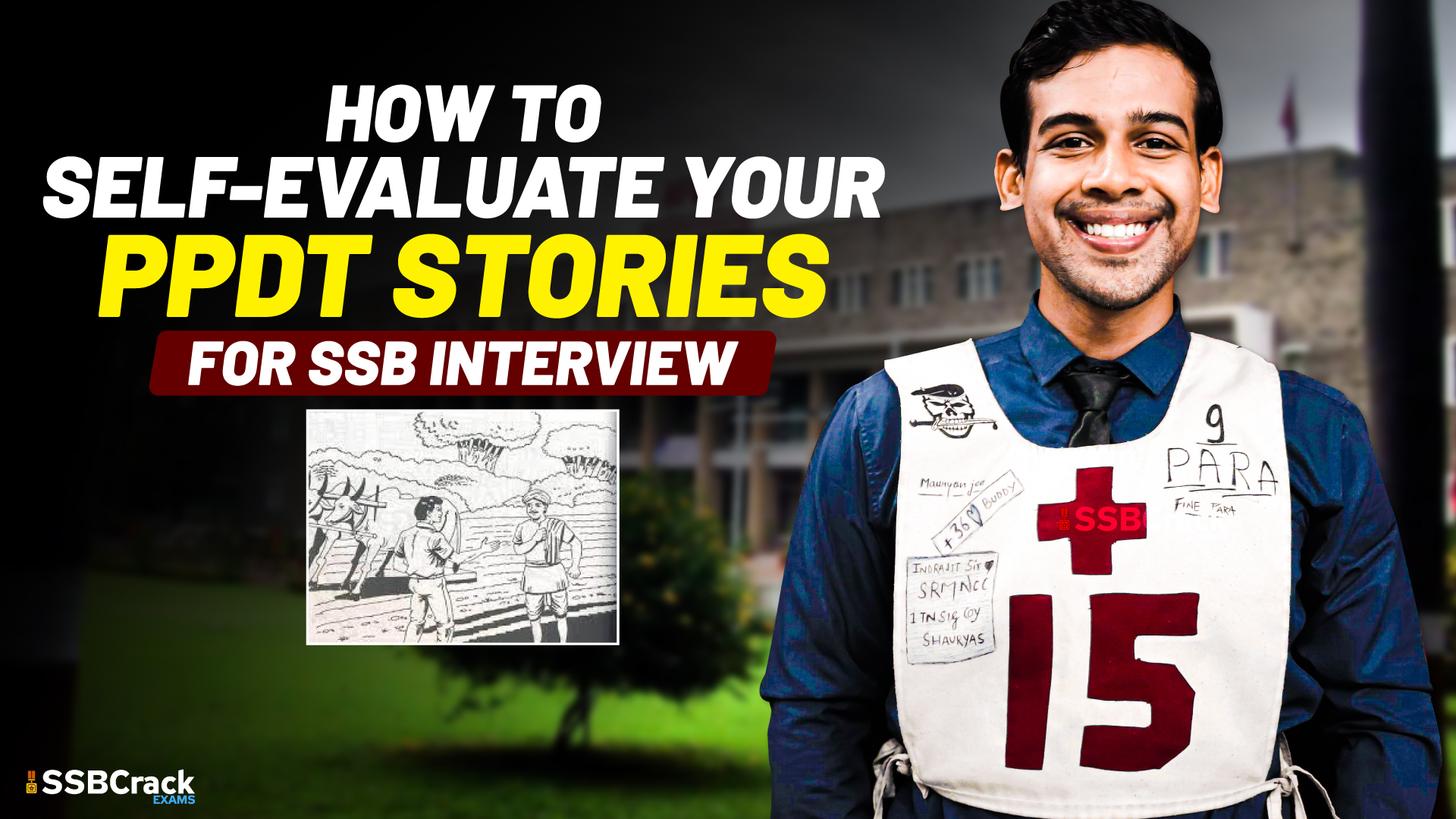The Picture Perception and Discussion Test (PPDT) is a crucial component of the Services Selection Board (SSB) interview process, assessing a candidate’s ability to analyze and narrate stories based on a given image. Self-evaluation is a powerful tool for candidates seeking to improve their performance in the PPDT. In this article, we will delve into the key aspects of self-evaluating your PPDT stories, offering insights on how to enhance your storytelling skills and make a lasting impression during the SSB interview.
- Understand the Evaluation Criteria: To effectively self-evaluate your PPDT stories, it’s essential to comprehend the evaluation criteria used by the assessors. Generally, assessors look for qualities such as initiative, intelligence, creativity, and effective expression in your narration. Familiarize yourself with these criteria to identify areas for improvement.
- Review the Image Thoroughly: Start by revisiting the image provided in the PPDT. Analyze the details, characters, and setting. Ensure that you have accurately interpreted the scene, as a clear understanding is the foundation for constructing a compelling story.
- Evaluate the Structure of Your Story: Assess the structure of your narrative. A well-organized story typically includes an introduction, a body with key events, and a conclusion. Check if your story follows a logical sequence and if each part contributes to the overall coherence of the narrative.
- Check for Relevance: Evaluate the relevance of your story to the image. Ask yourself if the events and characters you’ve introduced align with the visual cues provided. A story that closely relates to the image is more likely to be perceived as well-thought-out and appropriate.
- Assess Creativity and Originality: Consider the level of creativity in your story. Assessors appreciate original and imaginative narratives. Reflect on whether your story introduces unique elements or perspectives that set it apart from others.
- Analyze Language and Expression: Examine the language used in your story. Is it clear, concise, and expressive? Avoid excessive jargon or overly complex language. Assessors value effective communication, so ensure that your story is articulated in a manner that is easily understood.
- Evaluate Character Development: If your story involves characters, assess how well they are developed. Do they have distinct personalities, motivations, and roles in the narrative? Well-defined characters contribute to a richer and more engaging story.
- Consider Time Management: Reflect on the time management aspect of your story. PPDT stories typically have a time limit for narration. Ensure that your story is well-paced and that you’ve covered essential details without exceeding the allotted time.
- Seek Feedback from Peers: Enlist the help of peers or mentors to provide constructive feedback. A fresh perspective can highlight aspects of your story that you might have overlooked. Additionally, diverse feedback allows you to identify recurring patterns for improvement.
- Identify Strengths and Weaknesses: After a thorough evaluation, identify the strengths and weaknesses of your PPDT story. Acknowledge elements that worked well and areas that need enhancement. This self-awareness is crucial for targeted improvement.
- Set Goals for Improvement: Based on your self-evaluation, set specific goals for improvement. These could include enhancing creativity, refining language skills, or focusing on better time management. Clear goals provide direction for your ongoing efforts.
- Practice Regularly: Like any skill, storytelling improves with practice. Incorporate regular PPDT practice sessions into your routine. Use different images to challenge yourself and work on various aspects of storytelling.
- Record and Analyze: Record yourself narrating PPDT stories and listen to the recordings critically. Pay attention to tone, pacing, and clarity. This self-analysis can reveal nuances in your storytelling style that may need adjustment.
- Compare with Successful Examples: Study examples of successful PPDT stories. Analyze how these narratives effectively incorporate the evaluation criteria. Comparing your stories to successful ones can provide insights into areas where you can elevate your storytelling.
- Iterative Improvement: Approach PPDT story improvement as an iterative process. Continuously revisit and refine your stories based on self-evaluation and feedback. Each iteration brings you closer to mastering the art of storytelling.
Conclusion:
Self-evaluating your PPDT stories is a valuable practice for candidates aiming to excel in the SSB interview process. By understanding the evaluation criteria, reviewing the image meticulously, and assessing various aspects of your storytelling, you can identify areas for improvement and refine your approach. Remember, consistent practice, thoughtful reflection, and a commitment to ongoing improvement are key elements in mastering the art of PPDT storytelling.




















